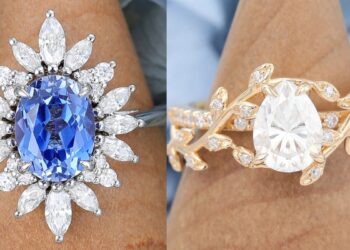Equally as significant as penning a compelling resume or cover letter, dressing appropriately can make or break your first impression during a job interview. Your interview or job fair is the stage where you showcase the culmination of your efforts. Selecting what to wear, in alignment with contemporary dress standards, involves assessing the situation, understanding the expectations, and strategizing accordingly.
There’s no universal blueprint or shortcuts when deciding on your interview outfit. Certain careers might demand nearly formal wear for a successful application, whereas others might have more relaxed criteria, just steering clear of casual wear like T-shirts and jeans. Here, we present five tips to steer you towards sartorial success.
Choose the Appropriate Outfit
Hollywood stars recognize that taking on a role transcends merely saying lines and finding the perfect moment for an emotional release; their attire needs to enhance their performance as well. Dressing for an interview should be seen not just as an attempt to secure the job based on your look, but as integrating your outfit into the total presentation.

Hiring managers often make a snap judgment within the first 10 seconds about their interest in hiring you. If your overall presentation is impeccable and your clothing complements it, it becomes more challenging for them to discount you as a potential candidate.
Stay Up-to-date
Interviews communicate through more than just words; your attire speaks volumes as well. An outfit not up-to-date with the contemporary dress code can immediately convey a negative impression. You don’t necessarily have to chase the latest trends, avoid clothing that’s noticeably out-of-date, specifically anything over five years old. Choosing modern, current styles demonstrates that you’re attuned to the present.
Beware of erring on the side of being overly casual or trendy, though. Hiring managers appreciate a youthful and fresh look, indicating you’re synchronized with today’s culture. However, they do not favor seeing accessories like nose rings, sandals, or an ensemble that suggests you’re gearing up for a social outing rather than a professional meeting. Aim to present yourself in a manner that suggests maturity, regardless of whether you’ve recently finished college.
Remember to Consider the Job and the Location
Workwear clothing significantly differs based on the industry and the prevailing climate where your employees will predominantly be working. Since safety is paramount in protective gear, compile a checklist of the most needed features before placing new orders.
For instance, high-visibility attire becomes necessary if your workers are operating in low-light conditions or near moving vehicles. Conversely, weatherproof softshell jackets are indispensable for those exposed to cold and severe outdoor conditions. You can also opt for work leisure clothes that blend in casual and formal environments, providing versatility for employees with changing work duties.
Personalization is Essential
Adding the company logo to employee uniforms is essentially the initial and indispensable action, as it distinguishes and brings cohesion among your workforce. Yet, this isn’t the sole avenue for customization; explore whether the supplier can inject creativity to make the uniforms distinctly unique to your brand.
Whenever individuals observe your staff donning attire with your company’s name, logo, and distinctive design, it will naturally promote your brand. View the costs associated with customizing workwear as an investment in marketing. Be mindful not to go overboard, as excessive customization can create an unattractive and off-putting look.
Wear Clothing That Mirrors Your Individual Character
People usually build a large part of their impression at the first moment, so your appearance plays an important role in how colleagues and managers look at you. If you want to develop in your job or get the job of your dreams, dress well. Appropriate for the job you want, and add your own touches to the fashion you wear, to create your unique and different personality from others.
Endnote
Finding the ideal corporate dress code that matches your environment is crucial for projecting the desired image and enhancing relationships with colleagues and clients. Several factors must be considered, including the fabric’s quality and comfort, the precision of the tailoring, alignment with the company’s style, and the personal touches that make each piece stand out. Seeking advice from a specialist can be a game-changer; their expertise ensures the selection of a combination that looks impeccable and allows for complete comfort at work.




